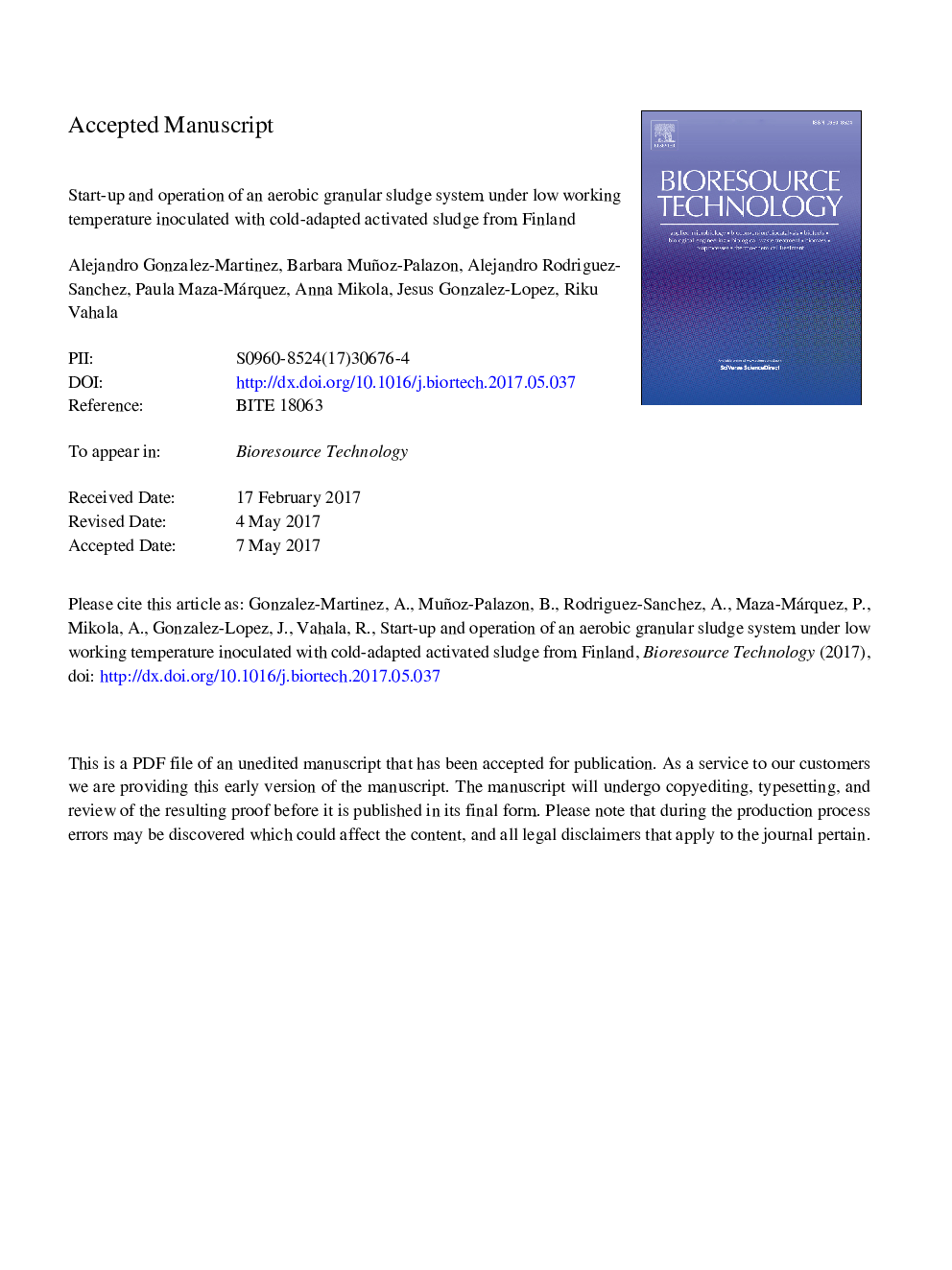| Article ID | Journal | Published Year | Pages | File Type |
|---|---|---|---|---|
| 4997138 | Bioresource Technology | 2017 | 26 Pages |
Abstract
An aerobic granular sludge system has been started-up and operated at 7 °C temperature using cold-adapted activated sludge as inoculum. The system could form granular biomass due to batch operation allowing for just 5-3 min of biomass sedimentation. Scanning electron microscopy showed that fungi helped in the granular biomass formation in the early stages of the granule formation. The removal performance of the system was of 92-95% in BOD5, 75-80% in COD, 70-76% in total nitrogen and 50-60% in total phosphorous. The bacterial community structure from cold-adapted activated sludge changed during the operational time, leading to a final configuration dominated by Microbacteriaceae members Microbacterium and Leucobacter, which were strongly correlated to biomass settling velocity and bioreactor performance, as suggested by multivariate redundancy analyses. This experiment showed that aerobic granular sludge systems could be successfully started-up and operated, with high performance, under low operational temperatures when using cold-adapted biomass as inoculum.
Keywords
Related Topics
Physical Sciences and Engineering
Chemical Engineering
Process Chemistry and Technology
Authors
Alejandro Gonzalez-Martinez, Barbara Muñoz-Palazon, Alejandro Rodriguez-Sanchez, Paula Maza-Márquez, Anna Mikola, Jesus Gonzalez-Lopez, Riku Vahala,
